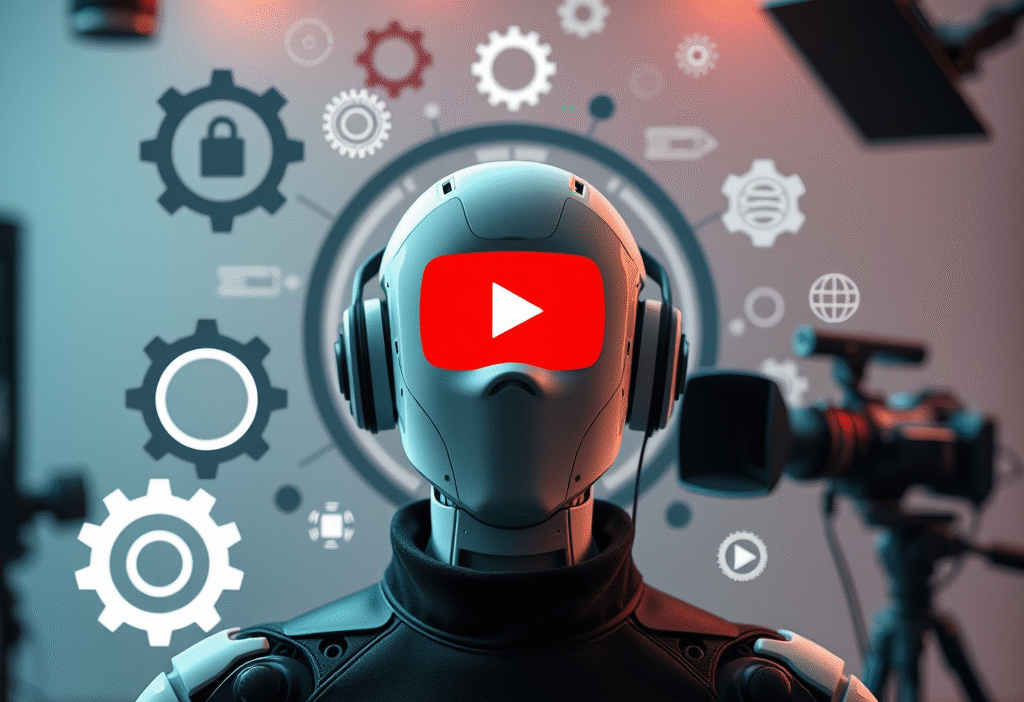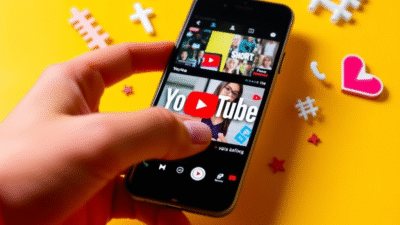A silent revolution is taking place in the YouTube creator economy. Faceless YouTube automation channels, where creators never appear on screen and much of the content is automated, are not only gaining millions of views, they’re building sustainable income streams with minimal ongoing effort. This model, once considered low-effort or spammy, is now being redefined by smarter strategies, high-quality production, and AI-powered tools that scale content like never before.
As more creators look for ways to earn from YouTube without being constantly on camera or tied to a rigid production schedule, faceless channels offer a scalable, systemized business model that aligns perfectly with current automation and AI trends.
What Exactly Is a Faceless YouTube Channel
A faceless YouTube channel is one where the creator never shows their face, and sometimes doesn’t even use their voice. Instead, the content is driven by voiceovers, animations, stock footage, motion graphics, or slideshows. These channels can span a wide range of niches from tech reviews and finance breakdowns to storytelling, motivation, tutorials, and even niche entertainment.
While the content may not feature a personal brand visually, the strategy behind these channels is anything but impersonal. With strong scripting, high watch-time retention, and smart keyword targeting, faceless channels can perform exceptionally well, especially when combined with YouTube SEO.
How Automation Is Powering Faceless Channels
The real evolution comes when automation is introduced. Many creators are now outsourcing or automating different components of the content pipeline. Tools like ChatGPT help generate scripts in minutes. AI voice generators produce human-like voiceovers without needing a microphone. Platforms like Pictory, Synthesia, and Runway ML help generate video content or edit footage without needing expensive equipment or time-consuming shoots.
There are also workflow systems being set up using tools like Notion, Airtable, and Zapier to manage video ideas, publishing schedules, thumbnail creation, and even auto-uploading. This automation stack reduces the workload dramatically, allowing creators to manage multiple faceless channels at once, even while working a full-time job or running other businesses.
Why This Model Is So Attractive for New and Experienced Creators
The faceless channel model appeals to both beginners and experienced marketers. For newcomers, it eliminates the anxiety of being on camera and removes the need for expensive filming gear. For experienced digital entrepreneurs, it’s a scalable, repeatable business system. Some creators treat YouTube channels like digital assets, growing them with quality content and eventually selling them for profit much like websites or eCommerce stores.
In 2024 and 2025, there has also been a massive shift in how viewers consume content. Audiences are now more accustomed to AI-generated narration, clean B-roll footage, and motion graphics. If the content is valuable and well-structured, they don’t mind who or what created it.
Niches That Work Best for Faceless Automation
Certain niches lend themselves especially well to the faceless format. These include personal finance, crypto, health and wellness, productivity, AI tools, life advice, tech explainers, and trending news. These topics are information-dense, repeatable, and benefit from evergreen and trending content alike. The key is to find the intersection between search volume, monetization potential, and content ease.
Many creators build topical authority in one niche while experimenting with multiple content styles. Some use storytelling formats, while others use listicles, tutorials, or short explainers. Thumbnail consistency and SEO-optimized titles also play a critical role in growth.
Revenue Streams Beyond AdSense
AdSense revenue is just the starting point for faceless channels. Smart creators are adding affiliate marketing links in the video descriptions, promoting digital products, or offering sponsorship slots. Since these channels often cover high-CPM niches, the earning potential is significant. Some channels with just 10K subscribers can earn thousands monthly through a combination of YouTube Partner Program earnings and off-platform monetization.
Others repurpose their videos into TikToks or Instagram Reels, drive traffic to email lists, or build authority websites that compound their reach and revenue.
Building a Long-Term Content System
The most successful faceless creators treat their YouTube channels like media companies. They hire writers, voice actors, video editors, and thumbnail designers often from platforms like Upwork or Fiverr. With clear systems, they’re able to publish consistently, analyze performance, and scale with confidence. AI helps fill in the gaps and speed up the creative cycle.
As the creator economy continues to mature, faceless automation channels will likely become more mainstream not as shortcuts, but as legitimate content brands powered by smart systems, high-quality execution, and value-driven storytelling.
Final Thoughts
Faceless YouTube automation is not just a trend, it’s a strategic content model for creators who want freedom, scalability, and income without constant on-screen presence. With AI tools and creative workflows evolving fast, the barrier to entry has never been lower. If you’ve been hesitating to start your YouTube journey, now is the time to test this model, refine your system, and build a faceless brand that works for you 24/7.



